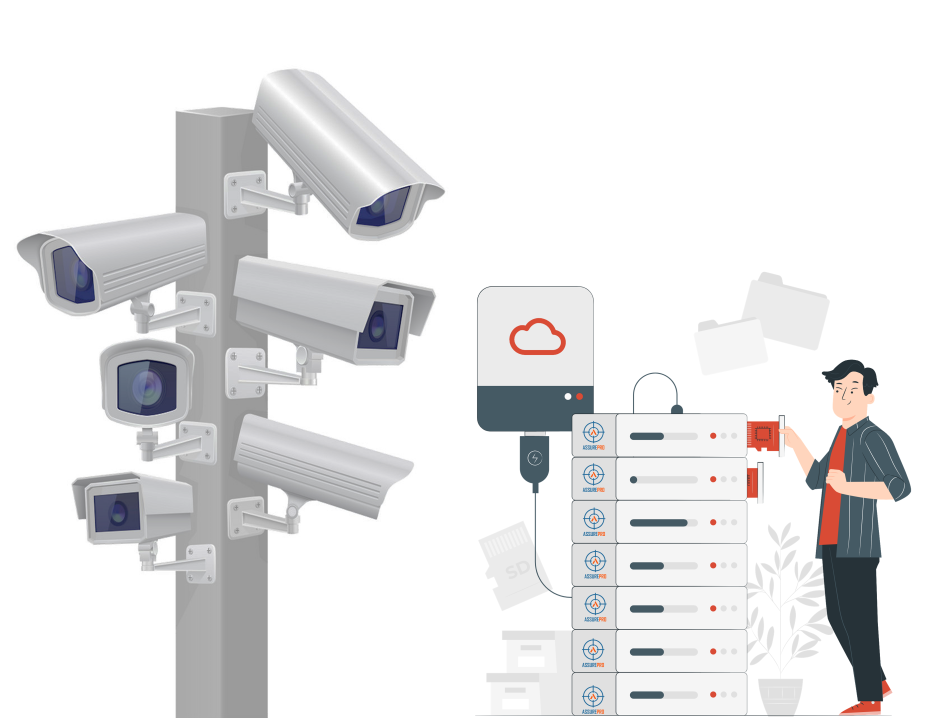Closed-circuit television (CCTV) systems have become increasingly popular over the years, as they offer an effective and affordable way to monitor and secure a property. They enable you to monitor your premises, deter potential intruders, and provide evidence in the event of a crime. However, CCTV systems generate vast amounts of video data, which can quickly accumulate and become difficult to manage. Proper CCTV footage storage management is, therefore, crucial to ensure the reliability and effectiveness of your CCTV system. In this blog post, we will discuss some tips and best practices for CCTV storage management.
1. Choose the right cameras
Choosing the right cameras is the first step in effective CCTV management. There are many types of cameras available in the market, and each one has its own features and benefits. It is important to choose cameras that are suitable for your specific needs. For example, if you need to monitor a large area, you may need a camera with a wide-angle lens or a pan-tilt-zoom (PTZ) camera.
2. Install cameras in strategic locations
Once you have chosen the right cameras, the next step is to install them in strategic locations. The goal is to ensure that all areas of your property are covered by the cameras. You should also consider the lighting conditions in the areas where the cameras will be installed. Cameras should be installed in areas where there is sufficient lighting, and if necessary, additional lighting should be installed to improve visibility.
3. Use high-quality equipment
Using high-quality equipment is essential for effective CCTV management. This includes cameras, cables, recorders, and monitors. High-quality equipment will ensure that you get clear and reliable footage. It is also important to ensure that the equipment is maintained regularly to keep it in good working condition.
4. Keep footage secure
Keeping CCTV footage secure includes the physical security of the recorder and securing access to the footage. Access to the footage should be restricted to authorized personnel only. It is also important to ensure that the footage is backed up regularly to prevent loss of data. For example: When it comes to recorders, there are several types of recorders for CCTV systems, including digital video recorders (DVRs), network video recorders (NVRs), hybrid recorders, and standalone recorders but, without DVR CCTV cameras, businesses and homeowners would be left vulnerable to potential security breaches and incidents.
5. Remote monitoring
Remote monitoring is an effective way to manage CCTV systems. This allows you to monitor the cameras from a remote location, such as a control room or a mobile device. Remote monitoring can be particularly useful for large properties or properties that require 24/7 monitoring.
6. Conduct regular maintenance
Regular maintenance is crucial for ensuring the reliability and effectiveness of CCTV systems. This includes cleaning the cameras, checking cables and connections, and updating software and firmware. Regular maintenance will also help you identify any potential issues before they become major problems.
7. Monitor performance
Monitoring the performance of CCTV systems is important to ensure that they are working as intended. This includes monitoring the quality of the footage, the reliability of the equipment, and the effectiveness of the system in identifying potential security threats. Any issues should be addressed promptly to ensure that the system remains effective.
8. Keep up-to-date with technology
Finally, it is important to keep up-to-date with the latest CCTV technology. This will ensure that you are using the most effective and efficient systems available. New technologies, such as artificial intelligence and facial recognition, can greatly enhance the effectiveness of CCTV systems. It is essential to ensure that you have enough CCTV storage capacity to store all the data generated by your CCTV system, both short-term and long-term. Short-term storage is typically used to store video data for a few days to a few weeks, while long-term storage is used to store video data for several months or years.
To determine your storage needs, you should consider the number of cameras, the resolution of the video, and the length of time you need to retain the data. Higher-resolution cameras generate larger files, requiring more storage space. For more details on your storage requirements check out our online CCTV storage calculator to find your ideal CCTV storage needs.
In conclusion, effective CCTV management requires careful planning, proper installation, high-quality equipment, regular maintenance, and ongoing monitoring. By following these tips and practices, you can ensure that your CCTV system is reliable, effective, and provides the time you need to retain video data will depend on various factors, including legal requirements, operational needs, and the potential value of the data.

